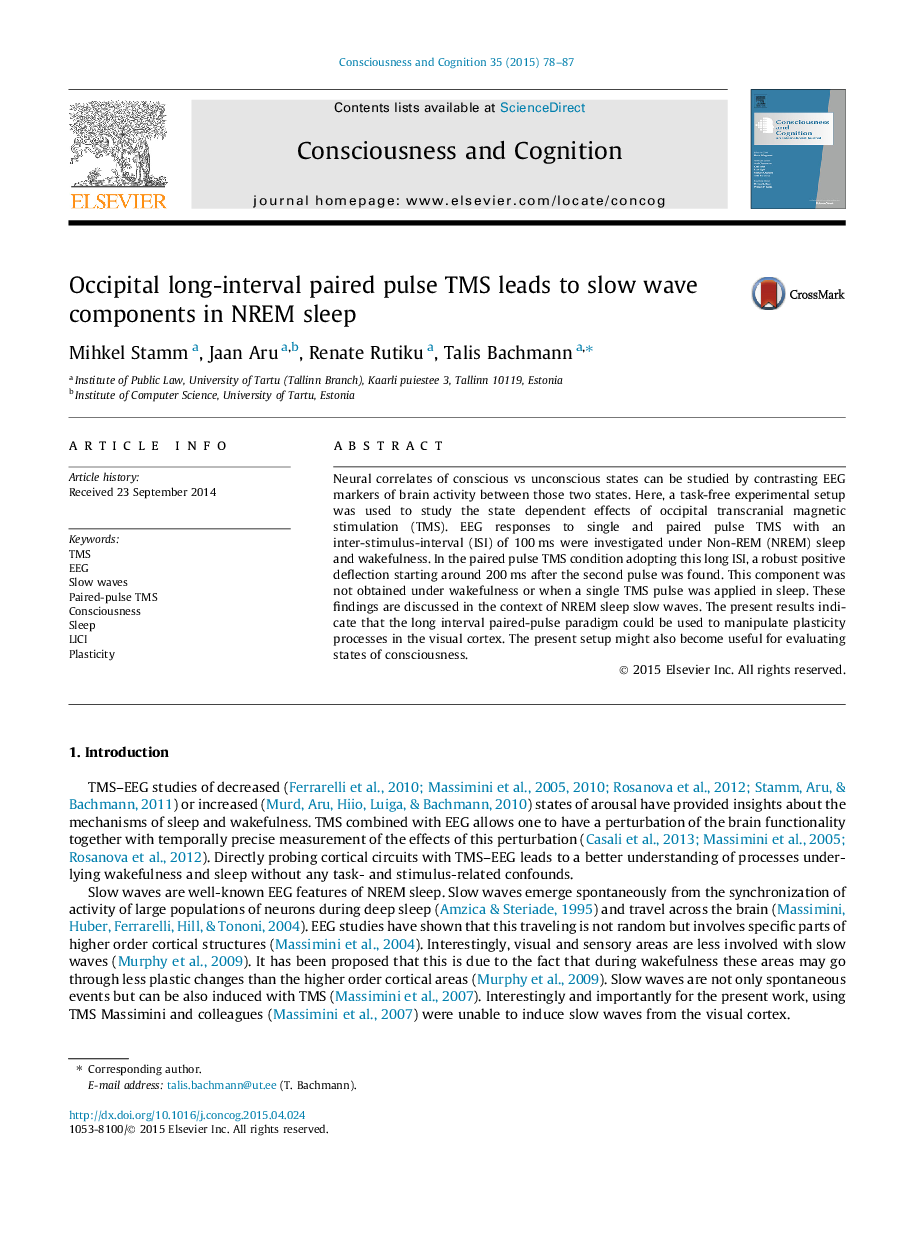| Article ID | Journal | Published Year | Pages | File Type |
|---|---|---|---|---|
| 7289259 | Consciousness and Cognition | 2015 | 10 Pages |
Abstract
Neural correlates of conscious vs unconscious states can be studied by contrasting EEG markers of brain activity between those two states. Here, a task-free experimental setup was used to study the state dependent effects of occipital transcranial magnetic stimulation (TMS). EEG responses to single and paired pulse TMS with an inter-stimulus-interval (ISI) of 100Â ms were investigated under Non-REM (NREM) sleep and wakefulness. In the paired pulse TMS condition adopting this long ISI, a robust positive deflection starting around 200Â ms after the second pulse was found. This component was not obtained under wakefulness or when a single TMS pulse was applied in sleep. These findings are discussed in the context of NREM sleep slow waves. The present results indicate that the long interval paired-pulse paradigm could be used to manipulate plasticity processes in the visual cortex. The present setup might also become useful for evaluating states of consciousness.
Related Topics
Life Sciences
Neuroscience
Cognitive Neuroscience
Authors
Mihkel Stamm, Jaan Aru, Renate Rutiku, Talis Bachmann,
